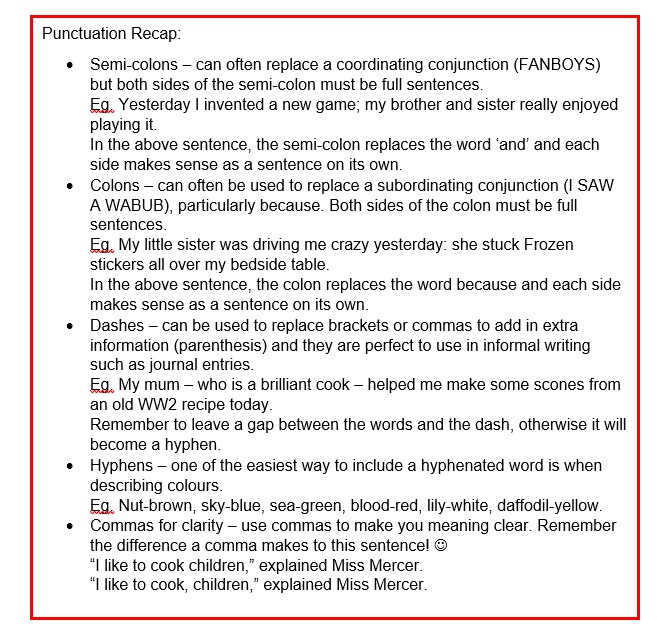- Home
- Our Learning
- Class Pages
- Oak Class
- Remote Learning March- July 2020
- 2e. Week Thirteen Monday 6th July
2e. Week Thirteen Monday 6th July
Home Learning Plans
Oak Class
Week Beginning: Monday 6th July
Hello there, Oak Class!
Thanks so much to those of you that have sent your artwork into me. They are brilliant!
Links to both of the leavers’ songs and the dance, are below:
Once I was in Year One: https://www.youtube.com/watch?v=IPXIgEAGe4U
High Hopes: https://www.youtube.com/watch?v=IPXIgEAGe4U
Dance Monkey: https://www.youtube.com/watch?v=q0hyYWKXF0Q
Song lyrics are included in this week’s pack J
If you are ready to send any videos of dance moves to me or have any questions, my email address is: oak@st-barnabas.kent.sch.uk
Sending lots of love to you all!
Miss Mercer
Monday:
- Maths: This week we are revising ratio and proportion and today we start with a recap on what ratio means. Watch the video at https://youtu.be/sMXDnDhgsy0 then have a go at the questions on the sheet.
- English: Start off by completing the worksheet on paragraphs in non-fiction. Then read the first three chapters of part 5: Justin’s part of the story. They are: Olivia’s Brother, Valentine’s Day and Our Town (p132-136). The punctuation in this part of the book is HORRIBLE! It makes it quite hard to read. I’m not really sure what went wrong. Maybe they forgot to edit it? Anyway, see it as a lesson in why punctuation is so important. Have a go at correcting the punctuation mistakes in the first 2 paragraphs of ‘Olivia’s Brother’.
- Science: Some more experiments you could try at home, this week. I have given you the links to a couple of websites that have some great experiments you could try: https://www.sciencefun.org/kidszone/experiments/ I have also included a couple of sheets with instructions on too.
Tuesday
- Maths: Today we are revising calculating ratio. Watch the video at https://youtu.be/GtytEpHvuXg if you need a reminder of the method, then complete the questions on the sheet. I’ll go over the starter questions too.
- English: Start with the avoiding repetition activity then move onto guided reading. Class book: Wonder – the punctuation was so awful that I have typed out the next three chapters for you to read. Then answer the following two questions: 1) Explain two ways that Justin’s part of the book is different from the previous four. 2) How are Justin’s parents different from Olivia’s? 3) Why do you think Miranda asked Justin if he was ‘Alright about it’?
- If you have arranged a Google Meet session, I will have emailed your time slot to you. Remember, the link is https://meet.google.com/lookup/c5t6bixsc4?authuser=0&hs=179 . For those of you that have not asked for a timeslot, use this time to practise the leavers’ song and rehearse a fifteen second dance/gymnastic/comedy performance to go with the dance track. Once these are ready, you can record them an email them to me at the address at the top of these plans.
Wednesday
- Maths: Today we are working on scale factors. Watch the video at https://youtu.be/quJ1R3tnIzE in case you need a reminder, then answer the questions on the sheet.
- English: Today you have an activity on organising paragraphs within text. Read the sheet then answer the questions. Then read the last two chapters of Justin’s part of the book: Bird and The Universe. I have typed it out on a separate word document for you again. Finally, I would like you to tell me what you think about Olivia’s reason for not telling her parents about the play. Do you think she is a bad person for thinking that about Auggie? Do you understand why she might have done it?
- PE: I have given you another activity to try out from the ‘Get Set’ website. The worksheet contain all the links you need and the good news is that you don’t need any special equipment! This week, you are designing a Japanese Sports Day.
Thursday
- Maths: Today we are moving onto calculating scale factors. Watch the video at https://youtu.be/UaN7pVafEew to get a reminder of what to do, then have a go at the questions on the sheet.
- English: Class book: Wonder – we are onto part six of the book which is August again. Thankfully, the punctuation seems to be pretty much OK again so you can go back to reading the pdf version. Please read North Pole, The Auggie Doll, The Lobot and Hearing Brightly (p144 - 150). Then, answer the questions on the sheet.
- Leavers’ - Use this time to practise the leavers’ song and rehearse a fifteen second dance/gymnastic/comedy performance to go with the dance track. Once these are ready, you can record them an email them to me at the address at the top of these plans.
Friday
- Maths: Final maths investigation today! This one is about connections. Read the instructions a couple of times as it can be a bit tricky to understand. Your job is to look at the different shapes, count how many odd and even vertices it has, then work out whether it is traversable. That means, could you draw a route from point to point where you only visit each point once, never go over the same line and never take your pencil off of the paper.
- English: Today you have a short writing task. I would like you to write a set of instructions on how to keep yourself safe during the coronavirus pandemic. The worksheet has some help and advice on where to start.
- RE: Final RE lesson and today we are looking at the concept of stewardship. Read through the worksheet and complete the activities when prompted.

